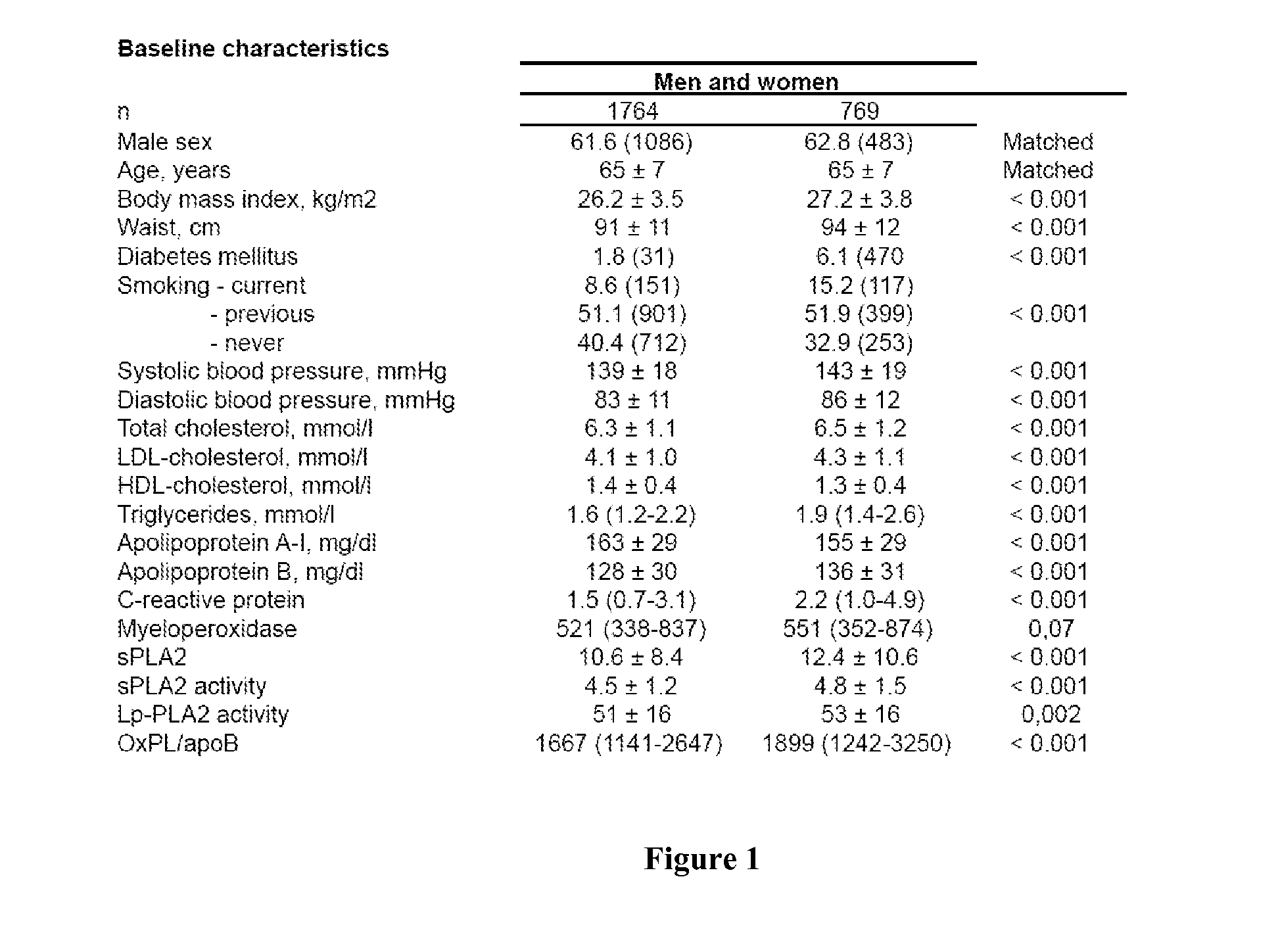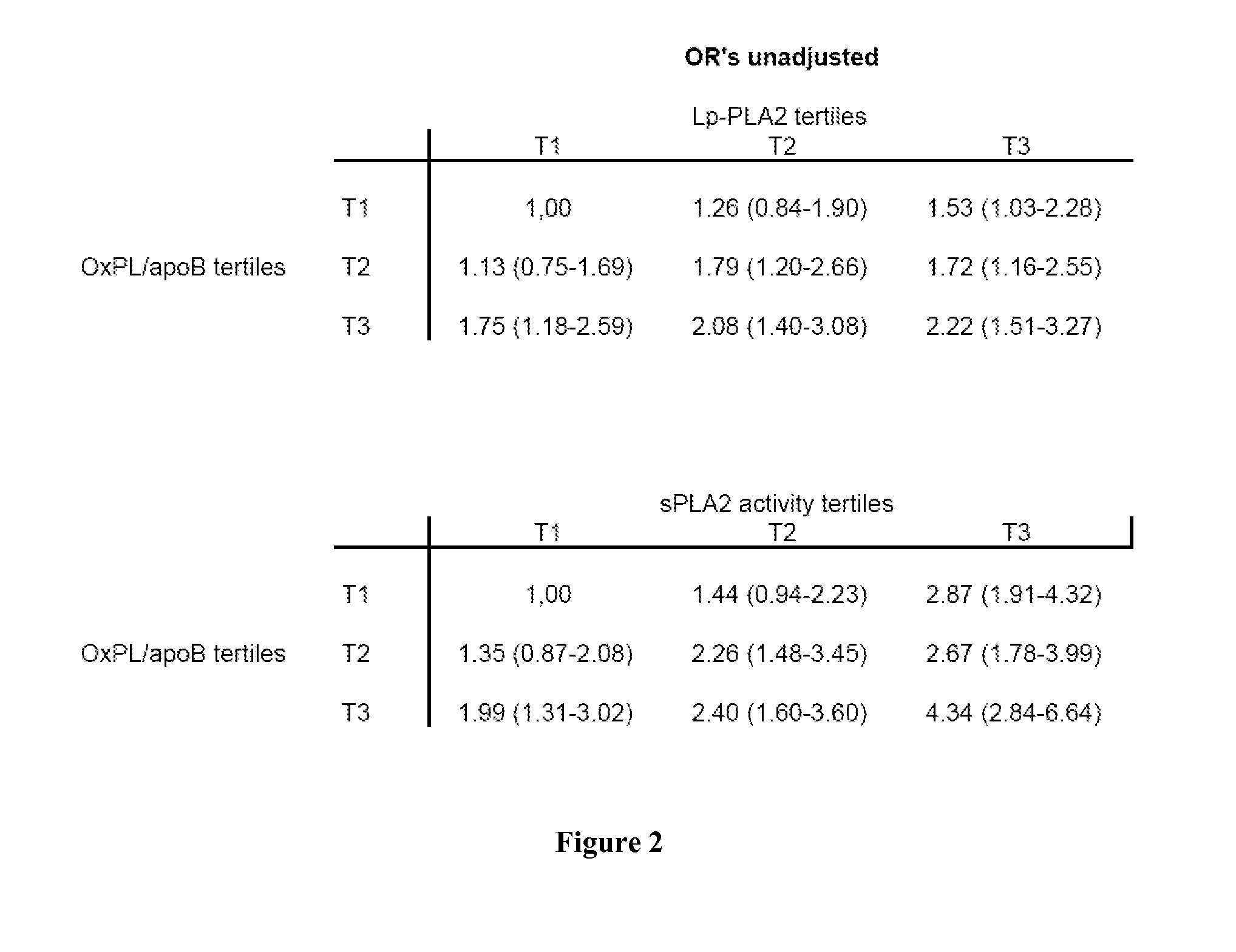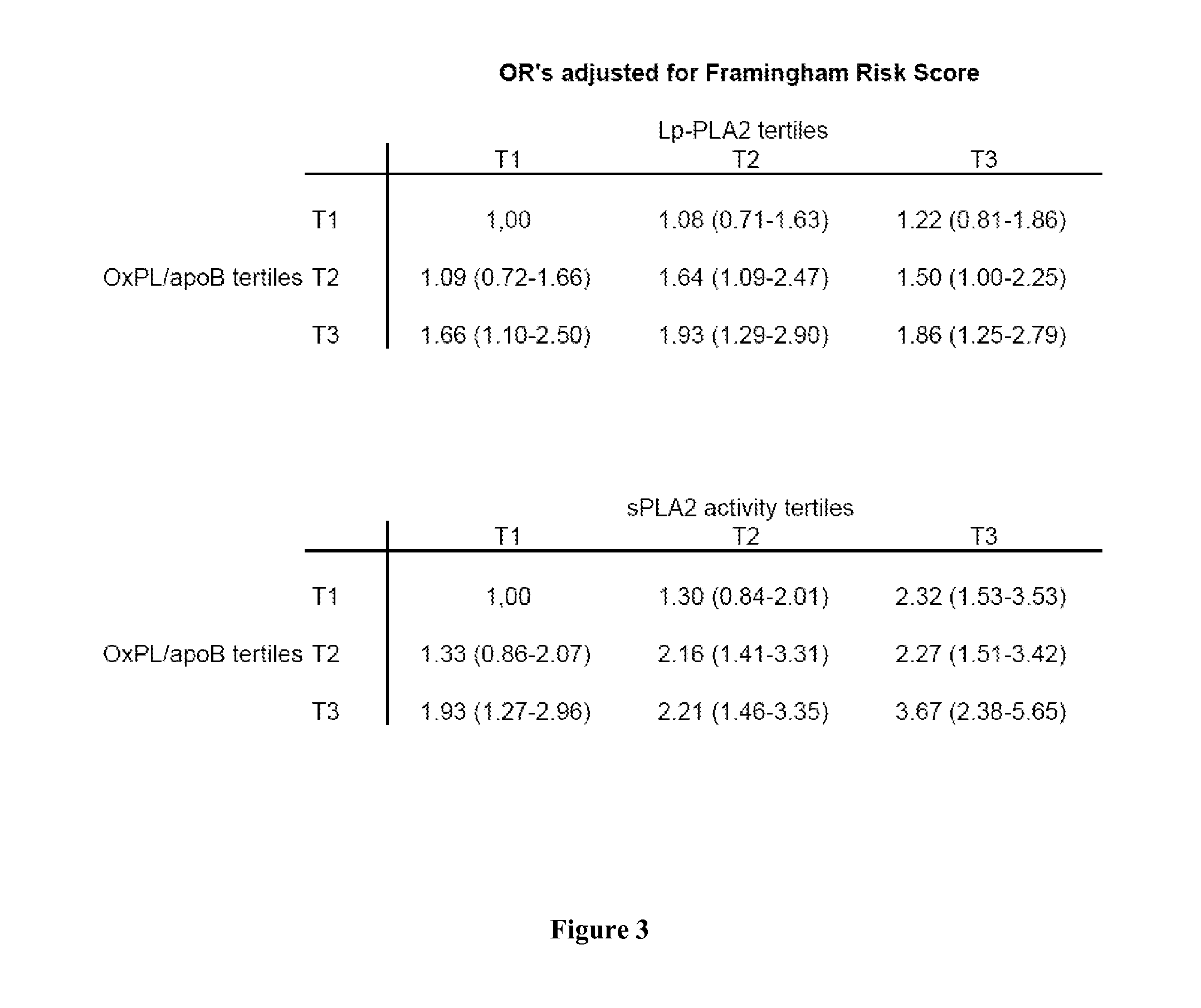Combination of spla2 activity and oxpl/apob cardiovascular risk factors for the diagnosis/prognosis of a cardiovascular disease/event.
a cardiovascular disease/event and spla2 activity technology, applied in the field of combination of spla2 activity and oxpl/apob cardiovascular risk factors, can solve the problems of cardiovascular diseases (cd) remaining the primary cause of morbidity and mortality worldwide, the patient cannot be aware of approximately 40% of the initial events, and the diagnosis is not correct, so as to achieve the effect of reducing the risk of cardiovascular disease, and reducing the risk of cardiovascular
- Summary
- Abstract
- Description
- Claims
- Application Information
AI Technical Summary
Benefits of technology
Problems solved by technology
Method used
Image
Examples
examples
[0160]Methods
[0161]Detailed description of the European Prospective Investigation Into Cancer and Nutrition (EPIC-Norfolk) follow-up study have been published previously (Day N. et al., Br. J. Cancer, 1999; 80 Suppl. I: 95-103). Briefly, this prospective population study of 25,663 men and women recruited from age-sex registers of general practices in Norfolk, aged between 45 and 79 years, was designed to investigate dietary and other determinants of cancer. The participants completed a baseline questionnaire survey between 1993 and 1997, attended a clinic visit and were followed up to November 2003, an average of about 6 years. All individuals have been flagged for death certification at the UK Office of National Statistics, with vital status ascertained for the entire cohort. In addition, participants admitted to hospital were identified using their unique National Health Service number by data linkage with the East Norfolk Health Authority database, which identifies all hospital c...
PUM
| Property | Measurement | Unit |
|---|---|---|
| total volume | aaaaa | aaaaa |
| total volume | aaaaa | aaaaa |
| pH | aaaaa | aaaaa |
Abstract
Description
Claims
Application Information
 Login to View More
Login to View More - R&D
- Intellectual Property
- Life Sciences
- Materials
- Tech Scout
- Unparalleled Data Quality
- Higher Quality Content
- 60% Fewer Hallucinations
Browse by: Latest US Patents, China's latest patents, Technical Efficacy Thesaurus, Application Domain, Technology Topic, Popular Technical Reports.
© 2025 PatSnap. All rights reserved.Legal|Privacy policy|Modern Slavery Act Transparency Statement|Sitemap|About US| Contact US: help@patsnap.com



